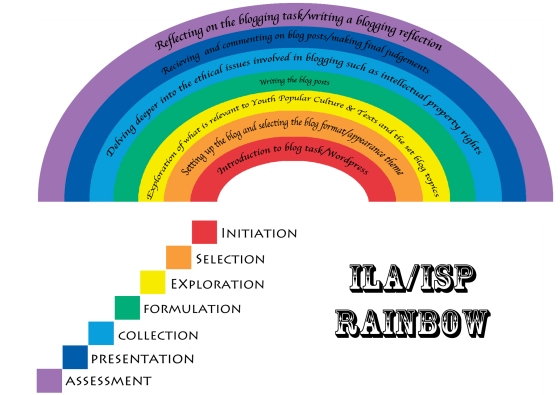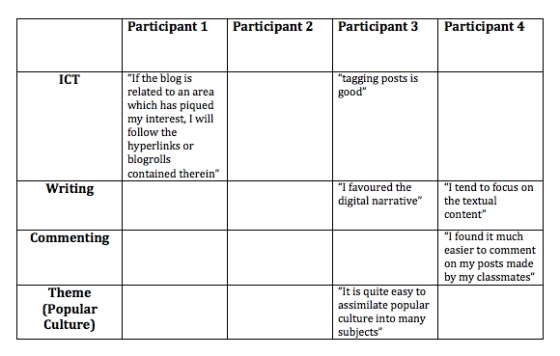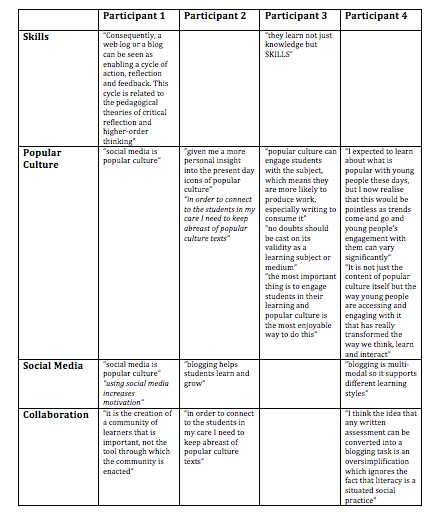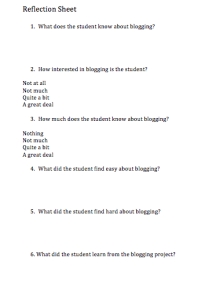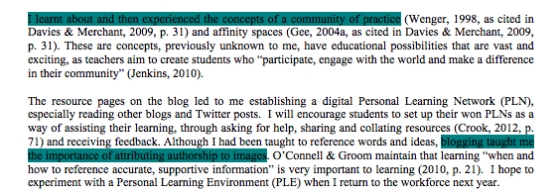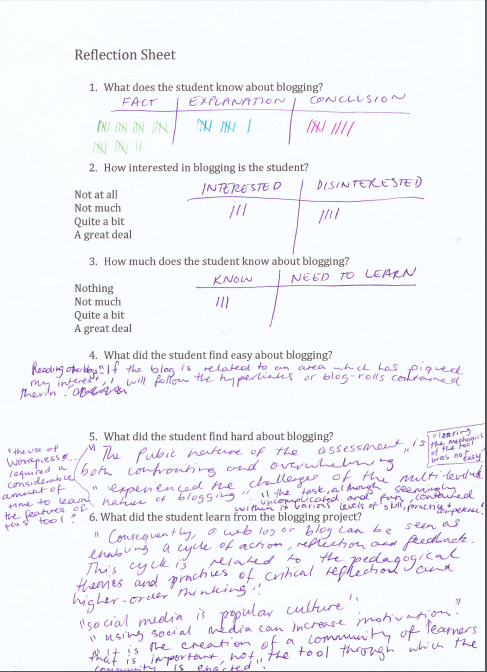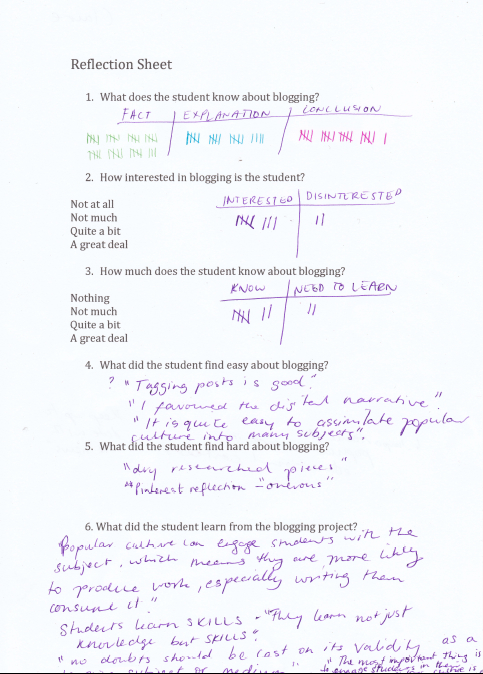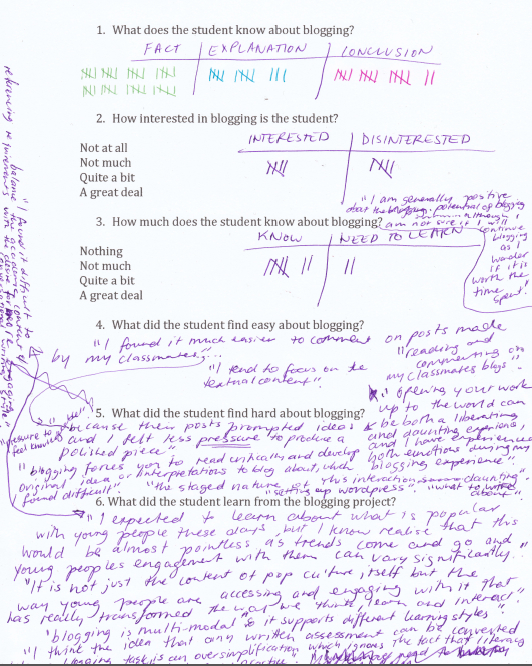Behrens, Susan. (2008). The Journey towards a Teaching Philosophy. Research & Teaching in Development Education, 25 (1), 64-69.
This article provides some thoughtful insight into inquiry learning through the eyes if a Ph.D holding teacher who has gone into the teaching profession without having a background in education. The aim of the article is for the writer to develop a teaching philosophy, something she had not previously constructed in a written sense. While looking for further research to back up her ideas, she comes to the conclusion that her philosophy of teaching includes inquiry-based learning. The author outlines how she uses inquiry-based learning, providing insight into different approaches that other teachers could draw upon.
This article is a less ‘run of the mill’ resource for looking at inquiry learning. It differs from other articles in that it provides a view of inquiry-learning by a teacher in higher education who has little to no formal training in pedagogic theory pre-inquiry learning. It also looks at the perspective of inquiry learning from a personal/practice perspective, less focused on scholarly evidence as a means of backing her claim for holding an inquiry-learning-based teaching philosophy. The article appeals to me as it is an inquiry-learning-based approach to explaining inquiry-learning.
Beyers, R.N. (2009). A Five Dimensional Model for Educating the Net Generation. Educational Technology & Society, 12 (4), 218-227.
This article discusses the importance of re-directing teachers attitudes towards school to a less teacher-centred and more student-centred approach. With the world at our virtual fingertips, the idea of learning and knowing everything is impossible. For this reason, learning needs to be self-directed and an educators role is to guide learners to search out information that is relevant to them, leaving them to make their own conclusions, constructing their own understandings. A proposed five-dimensional conceptual model – related to survival strategies, knowledge and comprehension, spacial orientation, time, and global vision – provides the framework for which educators can use to evaluate their own and their students learning and the model was designed to help raise awareness of the possible similarities that exist between the teacher and the net generation in their class.
The model provides interesting insight into how different approaches to learning can help to extend learning beyond the confines of classroom walls and curriculums. It is a useful model to help understand not only the importance of inquiry learning but also its effects.
Jimoyiannis, Athanassios; Tsiotakis, Panagiotis; Roussinos, Dimitrios; and Siorenta, Anastasia. (2013). Preparing teachers to integrate Web 2.0 in school practice: Toward a framework for Pedagogy 2.0. Australian Journal of Education Technology, 29 (2), 248-267.
Although social media and Web 2.0 were not designed for educational purposes, the article discusses the importance of using these technologies in teacher training. Recent research has found Web 2.0 and social media promote self-directed learning, provide opportunities for sharing content and assist in the development of lifelong learning skills. The article argues that for reasons such as these, along with students’ readiness to adopt Web 2.0 practices, Web 2.0 should be drawn into education. The article also highlights the importance of not using Web 2.0 in isolation from other technologies and used the TPACK model as a framework for ICT integration in educational settings. Drawing on a study of primary and secondary teachers experiences of participating in a program designed with Web 2.0 and the TPACK model in mind, the article found teachers had positive perceptions of the educational benefits of Web 2.0 but they saw were curriculum and infrastructure restrictions as possible hinderances to their Web 2.0 use.
The proposed Web 2.0 integration framework used in the study provides a good foundation for teachers and curriculum designers wanting to combine Web 2.0 and other technologies in education so it is a particularly useful resource for my Annotated Bibliography.
Justice, Christopher; Rice, James; Roy, Dale; Hudspith, Bod; and Jenkins, Herb.(2009). Inquiry-based learning in higher education: administrators’ perspectives on integrating inquiry pedagogy into the curriculum. Higher Education, 58, 841-855.
Using interviews and theoretical frameworks, this article discusses the importance of inquiry-based learning in higher education. The article focuses on one university in particular and looks at the challenges they experienced when they introduced inquiry learning and how they overcame these challenges. Through interviews the authors found that there was a lack of understanding of inquiry learning in relation to inquiry as pedagogy and they found that this created challenges for the university in terms of finding appropriate and willing instructors. Interest in inquiry-based courses was also found to drop in the first year of implementation and the study found that building interest in such courses can take time. Despite the challenges, the benefits of introducing inquiry learning into curriculums were found to be many. The authors suggest that encouraging academics to enter into the debate, along with ensuring administrators remain vigilant in their support for inquiry learning, is the key to making inquiry learning work in universities.
This article was chosen for my Annotated Bibliography because it helps explain the challenges university students face in gaining access to inquiry-based learning from a wider perspective. It is an interesting to note that many of the challenges that exist in getting inquiry learning into universities are in fact the same kinds of challenges that exist within schools.
Lonka, Kirsti. (2012). Engaging Learning Environments for the Future: The 2012 Elizabeth Stone Lecture. In The Road to Information Literacy: Librarians as Facilitators of Learning, pp. 15-28. De Gruyter: Berlin.
This article looks at a variety of studies based on modern theories of learning as a means to discuss the design of physical learning environments. The article emphasises that we are in a time of great change in learning theory and practice and that current curriculums and learning environments are being challenged by the development of new technologies. Since universities have followed a fairly constant approach to learning for centuries, the article urges universities to take on more inquiry-based systems that help foster productive participation in collaborative learning and knowledge-creation. The article proposes that games, simulations, social media and other engaging, experiential and creative learning methods now need to be included in the design of learning environments.
Not only does the article provide solid foundations for design, it also emphasising the importance of collaboration in the development of new theories. By linking theory and practice through the evaluation of other studies, the article is a valid and noteworthy source of information for those involved in teacher training.
Reel, Debbie; and Davies, Helen. (2011). Enquiry-based Learning: the impact on post-graduate trainees. Teen Journal 3 (1) September [Online]. Available at: http://bit.ly/xMlgKB (Accessed 17 Oct 2012).
The article discusses approaches to teaching and learning at a post-graduate level and looks at the implications of enquiry based learning on their own development. By conducting a study that involved Early Childhood teachers making a documentary about Early Childhood teaching, the authors were able to gain insight into the effect of enquiry-based learning on the teachers’ self-efficacy, motivation and overall feelings toward enquiry learning. Because a lot of the educators had to ‘unlearn’ their patterns of learning, many were adversely affected by the enquiry learning approach, particularly in terms of their motivation to the task. Many of the participants did not see their efforts as accomplishments and this was seen to go against the guiding principles of enquiry learning that accomplishments should raise self-efficacy. It was noted however that the task encouraged deeper levels of learning and skill development which was a positive aspect.
Since the article provides a more balanced view by including both the positive and negative issues surrounding enquiry learning in higher education rather than just the positive effects that many other articles state, I found the article to be an interesting and valuable resource for my Annotated Bibliography.
Sawyer, R Keith. (2004). Creative Teaching: Collaborative Discussion as Disciplined Improvisation. Educational Researcher, 33 (2), 12-20.
Traditional lecture-oriented methods of teaching, which are often still used in higher education, are challenged in this article. The author compares the “performance metaphor” with the “improvisation metaphor” as a way to explain the limitations of lecture-oriented methods of teaching. The performance metaphor is comparable with an actor performing on stage. Although engaging to some degree, the practice is quite planned and scripted with a focus on the individual rather than the collective. The improvisation metaphor, in contrast, is creative teaching within broad structures and frameworks and allows learning to be directed by what presents itself at different times. As the article argues, adhering to the improvisation metaphor has the power to push learning forward.
The improvisation metaphor is a metaphor for inquiry learning. Although slightly off-mark with its use of primary classroom observations to advocate the improvisation metaphor, this article appealed to me above all others. To me, this article encapsulates the importance of inquiry learning ‘in a nutshell’.
Wilber, Dana, J. (2011). College Students and New Literacy Practices [Chapter 20]. In Handbook of New Literacies. Taylor and Francis: USA.
This article focuses on the importance of exploring new ideas, concepts, situations and literature as a means to understand the impact and implications of new literacy practices on college students. Although some of the new literacy practices of today may be obsolete in the near future, the article still argues the importance of their use in college environments today. The author highlights that the majority of studies do not allow for deeper understandings of the implications of new literacies since they focus of comparing new literacy practices with traditional practices. Aspects such as hyperlinks within new literacy texts are often left out of studies so their role in college students ability to judge such things as the validity of sources of information is not yet understood.
The article references a great deal of current literature on the topic of new literacies in higher education and provides solid grounding for its suggestions of tools to be used in higher education to support higher-order thinking.
Yang, Chien-Hui; Tzuo, Pei-Wen; Higgins, Heidi; and Tan, Clarence Puay Yon. (2012). Information And Communication Technology As A Pedagogical Tool In Teacher Preparation And Higher Education. Journal of College Teaching and Training, 9 (4), 327-338.
This article looks at three questions regarding WebQuest as a tool for education: is WebQuest a useful tool to enhance teacher’s critical thinking, motivation and engagement and creativity? Does the use of WebQuest in teacher preparation foster stronger desires for teacher to integrate ICT in teaching? And does WebQuest foster content-specific learning in teacher preparation? The study answers these questions by looking at teachers’ favourable responses to using WebQuest in their classrooms and studying the affects of WebQuest as an inquiry-based teaching tool in a Master’s degree teacher preparation course at Nanyang Technological University in Singapore. The study found that after receiving WebQuest training, teachers were more likely to integrate ICT in their teaching.
By providing concrete evidence as apposed to only theoretical reasons why WebQuest is effective ICT-based inquiry learning tool, the article provides some interesting insight into why ICT-based inquiry learning tools should be considered when designing education curriculums. For this reason, the article was deemed relevant for the Annotated Bibliography.
Yang, Chien-Hui; Tzuo, Pei Wen; and Komara, Cecile. (2011). Using Webquest As A Universal Design For Learning Tool to Enhance Teaching And Learning In Teacher Preparation Programs. Journal of College Teaching and Learning, 8 (3), 21-29.
This article is what one may call a follow up study on the previous article in my Annotated Bibliography. Involving many of the same authors, the article takes the idea of using WebQuest in teacher preparation courses to another level. Although the article recaps much of the content covered previously, including the level to which WebQuest can enhance teachers’ higher order thinking, engagement and creativity, it looks further into the benefits of WebQuest by examining how it accommodates for students with diverse learning needs. With a study based in Singapore, the authors found that the majority of teachers found WebQuest beneficial in addressing the diverse learning needs of students and they concluded that WebQuest looked promising for use in special education and teacher preparation.
This article was chosen because it provides further evidence that WebQuest is an effective teaching tool. Often in the case of academic studies results conflict from study to study. Providing further ‘proof’ that WebQuest is an effective inquiry-based learning tool adds more weight to the idea that other ICT-based teaching tools are effective and should be included in inquiry learning curriculums.

